Frogs are among the most beneficial wildlife you can find in the garden – they’ll eat slugs for you, for one. That’s why building a frog house for the garden is one of the best things you can do this month.
There are plenty of ways to attract frogs to your garden, but at this time of the year, ahead of hibernation, shelter is more crucial than ever. Providing them with that well-earned respite will help them bounce back (literally!) into their pest control roles next spring.
Of course, you could buy a pre-built frog house – and I’ll point you to the best places to shop for those shortly – but if you’re keen to make your own from scratch, this is how to build your own frog house for the garden.
Best picks for you
1. Dig a hole for the house

(Image credit: Getty Images / Penpak Ngamsathain)
Before you start building the frog house itself, you’ll need to dig a hole for it. It’s pretty much the foundation of any well-made frog house, as long as you pick a shaded spot.
‘Ideally, you should dig up to 45cm deep,’ advises Richard Barker, horticultural expert at LBS Horticulture.
If you’ve got a garden pond, Richard says, it’s wise to build your frog house close by – but you don’t need one to attract hibernating frogs. It’s worth having some source of water around, though – even a bird bath is better than nothing (I’ve got my eye on this turned white marble bird bowl from Crocus).
2. Backfill with stones and logs
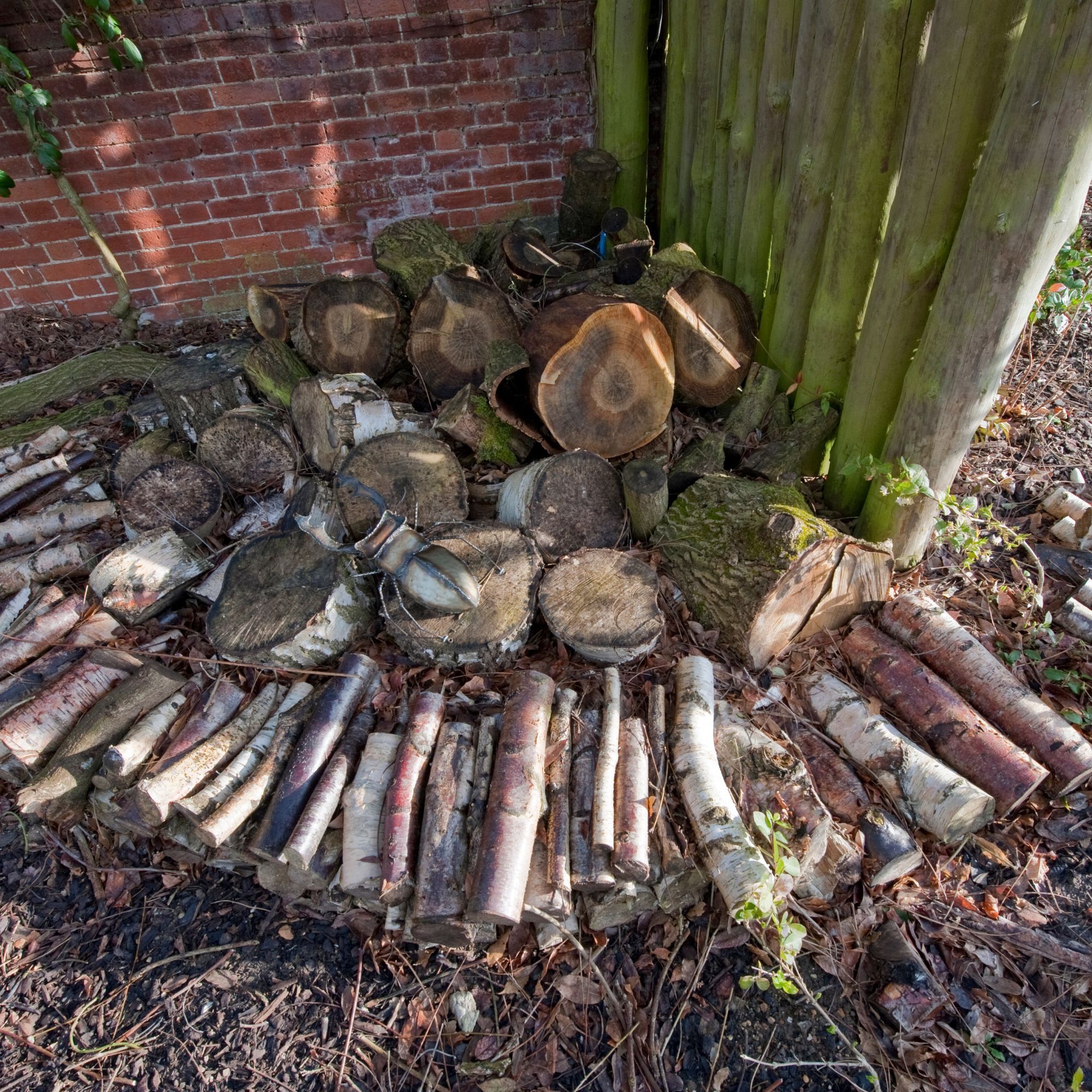
(Image credit: Getty Images / Mike Powles)
Next, you’ll need to fill the freshly dug hole with stones and logs. It might seem counterintuitive to fill a frog house to the brim, but it’ll create the perfect environment for amphibians. Just don’t compact them together.
‘Do not try to pack or push these down, but place them so that they will hold and not collapse, creating a maze of holes for the frogs,’ Richard advises.
A network of nooks and crevices is exactly what frogs need over the winter months, and if you’re tight on space, a frog house like this is an easy small wildlife garden idea.
‘Frogs like to remain cool (but not cold), damp, and feel protected,’ explains Sean McMenemy, wildlife product expert at Ark Wildlife. ‘They squeeze into small crevices where they feel safe from predators and are ready to come out and forage in the evenings, eating midges and mosquitoes.’
3. Cover the house from above
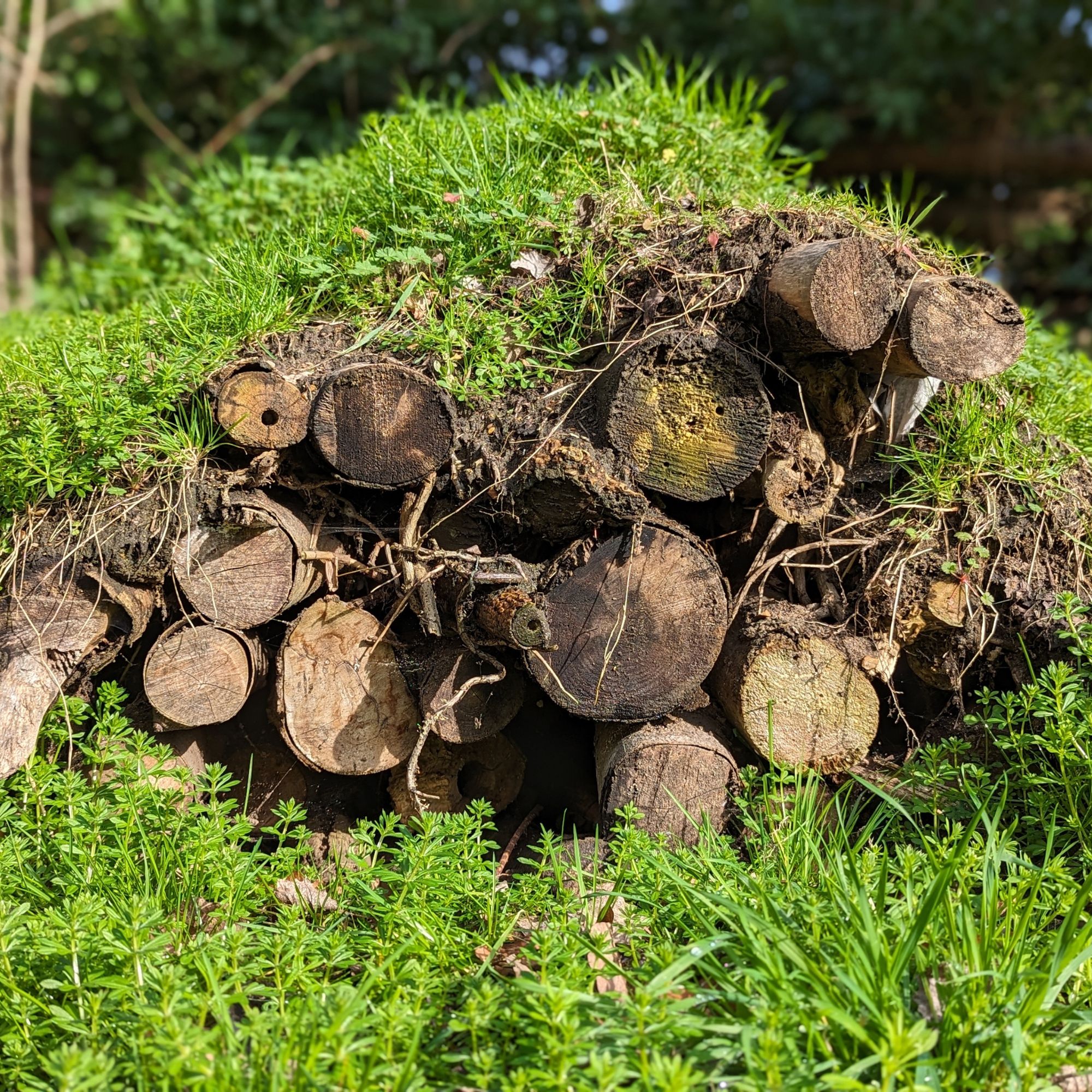
(Image credit: Getty Images / Richard Newstead)
Once you’ve constructed the network of logs and stones, you’ll need to shelter the frog house from above.
‘Place rocks and soil over the top of the hole, but do not close up every entrance and leave plenty of gaps around the edges,’ says Richard.
You can even cover the frog house with soil and sow wildflower seeds to help it blend into the rest of the garden. Or, let grass grow naturally over the top for a perfectly camouflaged home.
Where to buy frog houses for the garden
If you’d prefer to buy a ready-made frog house for the garden, these are some of the best models on the market.
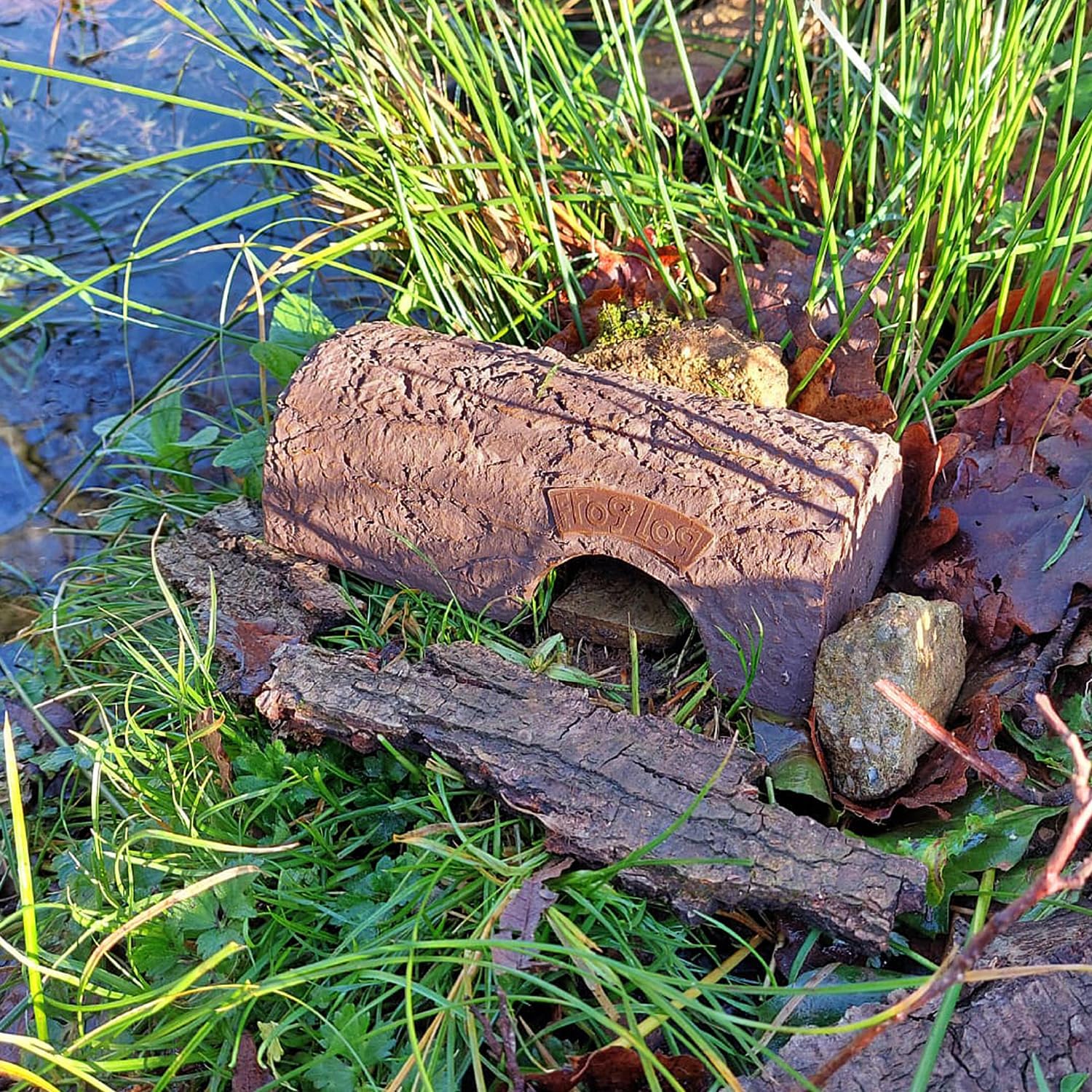
Wildlife World
Simon King Frog Log
The Simon King Frog Log is designed to mimic a real log, protecting amphibians from predators.
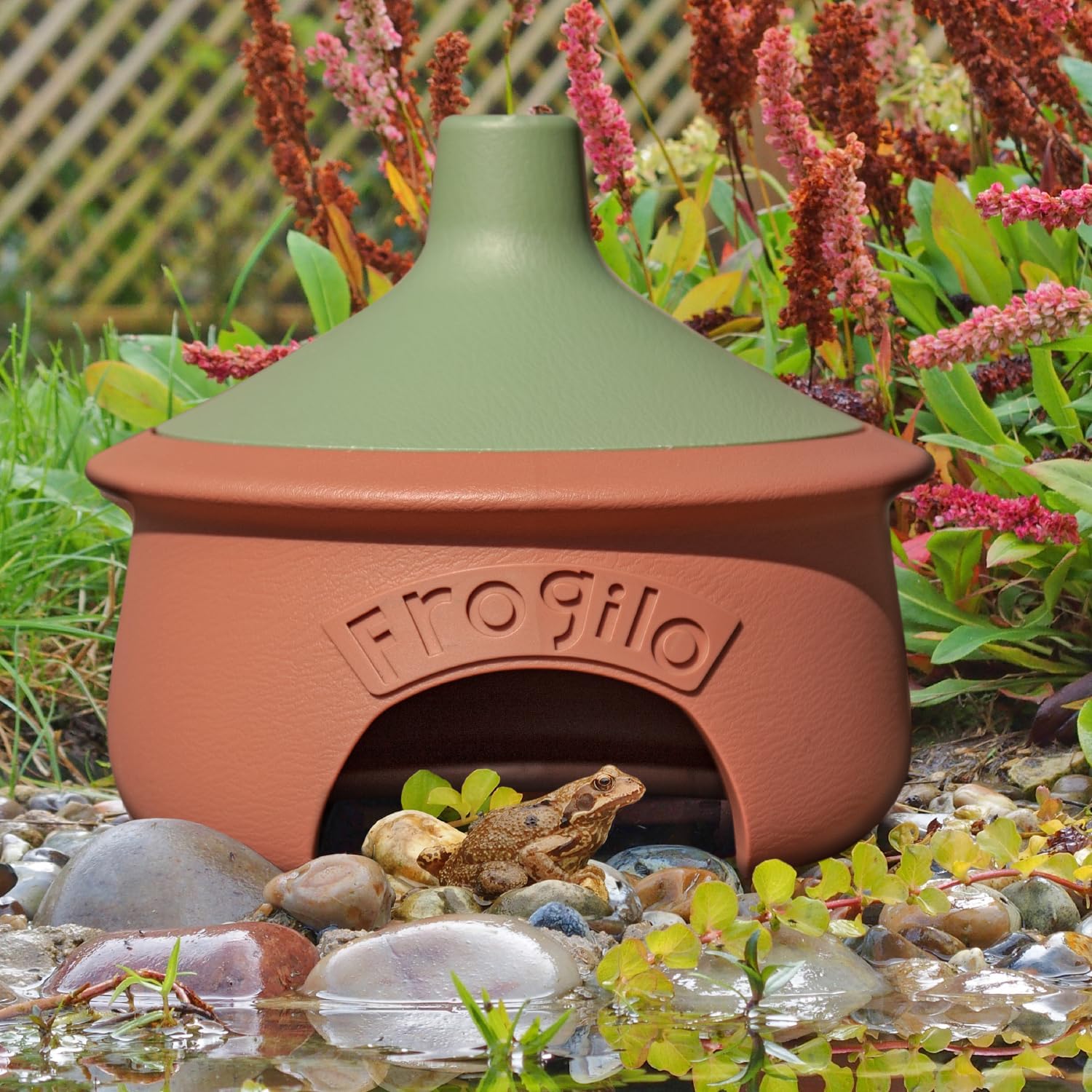
Wildlife World
Frogilo Frog and Toad House
The Frogilo’s insulating shelf provides ideal overwintering quarters for frogs and toads.

CJ Wildlife
National Trust Frog & Toad House
This affordable National Trust frog and toad house is made from durable spruce wood.
FAQsWhere is the best place to put a frog house?
You’ll need a quiet, secluded spot for your frog house, preferably somewhere damp and shaded. As previously mentioned, a nearby pond is ideal, but there are a few other places that work well, too.
‘Other good locations include beside compost heaps, or in damp areas behind sheds, fences, or garden structures,’ says Sean from Ark Wildlife.
Can frogs live in a garden without a pond?
Frogs might be semi-aquatic, but that doesn’t mean they’ll avoid a garden with no pond.
‘While ponds are ideal for breeding, frogs and other amphibians such as newts spend much of the year on dry land and can thrive in gardens without one if there is plenty of moisture and food,’ Sean explains. ‘Placing a frog-friendly feature, such as a shaded, quiet frog house, provides shelter and a safe refuge, allowing them to thrive in your garden and help control garden plant pests.’
If you want them to mate and lay eggs in your garden, though, it’s a good idea to build a garden pond.
Try building a frog house for your garden this season if you want all-natural, all-effective slug control come spring.

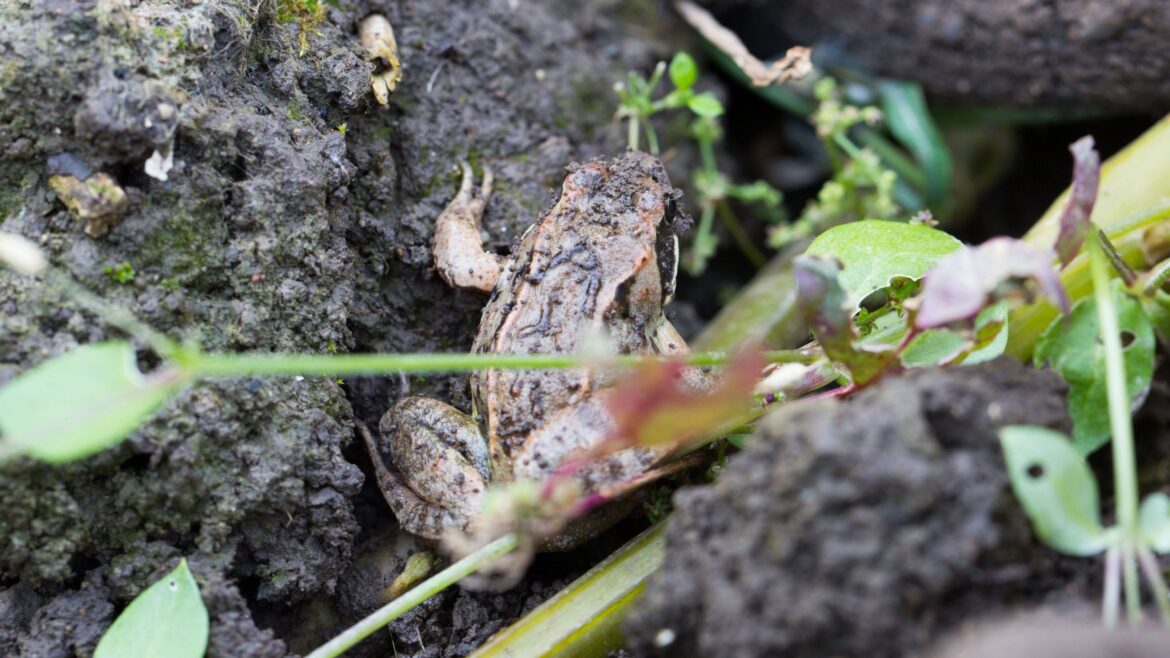
Comments are closed.